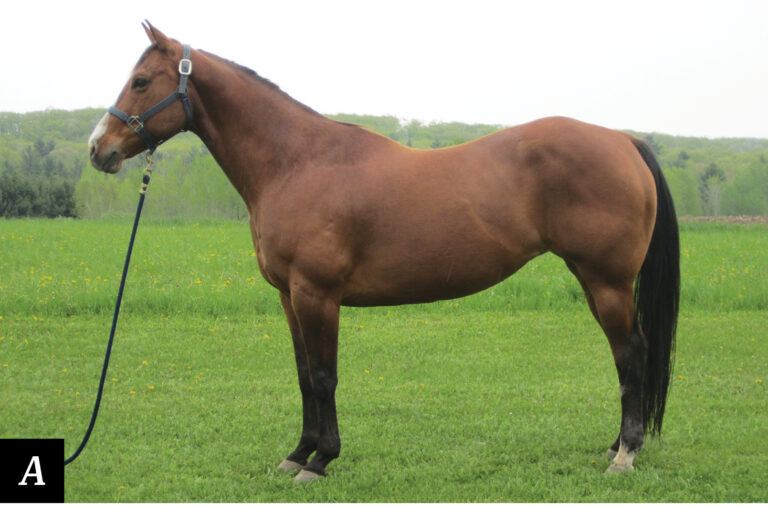
1. True or false: Splint bumps are most commonly found on the inside of a horse’s front leg, just above the knee.
T / F
2. A small area of edema on your horse’s stomach is…
A) a warning sign of colic.
B) a warning sign of dehydration.
C) usually not a cause for concern.
3. True or false: Ringbone bumps, which develop on the front of a horse’s pastern, feel like squishy lumps you can push around with your fingertips.
T / F
4. Which type of bump on a horse’s body can feel like a water balloon?
A) A seroma.
B) An edema.
C) A tendon injury.
HOW’D YOU DO? (Answers below.)
1. F is correct. Splints can occur on the inside or outside of the front and hind legs, but are most commonly found on the inside of one of the front legs, midway between the knee and fetlock.
2. C is correct. A small area of ventral (abdominal) edema is usually not a cause for concern—especially if it gets gradually smaller over a period of several days. It’s typically the result of an allergic reaction or a kick or other trauma elsewhere on the body. If it’s persistent or large, schedule a visit with your veterinarian to rule out more serious causes.
3. F is correct. Ringbone is a hard, bony bump. By the time you detect it, it can be about the size of a grape or almond, though it can grow to walnut-size over time. Most commonly due to pastern-joint arthritis, ringbone bumps appear when bone proliferates as the body tries to form a “bridge” to stabilize the painful joint.
4. A is correct. A seroma is a fluid-filled sac that occurs secondary to direct trauma, such as a kick from another horse. It can appear anywhere on a horse’s body, although the most common locations are in the middle of the chest or somewhere on an upper hind leg on either side of the tail.
[MORE ‘BUMPOLOGY’: Learn about other lumps and what they mean.]
Hey! Not already receiving H&R’s fun and informative newsletter? Sign up right now for The Ride. It’s free!




